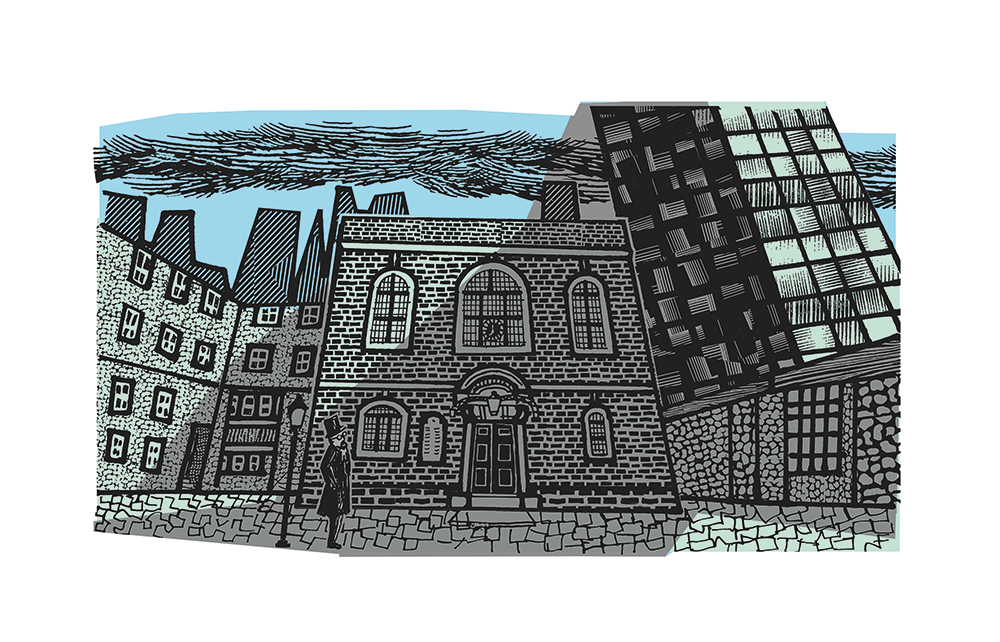Christopher Howse has narrated this article for you to listen to.
There was a little number, 223, pasted onto the back of one of the centuries-old wooden seats in Bevis Marks synagogue in the City of London. ‘What are these?’ I asked Rabbi Shalom Morris, who was showing me round.
‘They’re called gavetas,’ he replied, opening the lid of a compartment in the bench. ‘It’s a Portuguese word. They’re for people to leave their personal property here – prayer shawls and things – as we don’t carry anything on Shabbat.’
It was a detail that impressed on me the long history of the Sephardi tradition here, the oldest continuously functioning synagogue in Europe today. And now, Bevis Marks synagogue is under threat. There’s a proposal for a 43-storey tower block a few yards away at 31 Bury Street, which would literally overshadow the synagogue in its quiet paved courtyard.
To me, any very tall building in the City plonked next to an ancient place of worship is bullying bad manners
Rabbi Morris, with a habitual smile and a New York accent from his upbringing, sounded the most unhappy when trying to convey his relations with the City of London authorities.

Get Britain's best politics newsletters
Register to get The Spectator's insight and opinion straight to your inbox. You can then read two free articles each week.
Already a subscriber? Log in







Comments
Join the debate for just $5 for 3 months
Be part of the conversation with other Spectator readers by getting your first three months for $5.
UNLOCK ACCESS Just $5 for 3 monthsAlready a subscriber? Log in